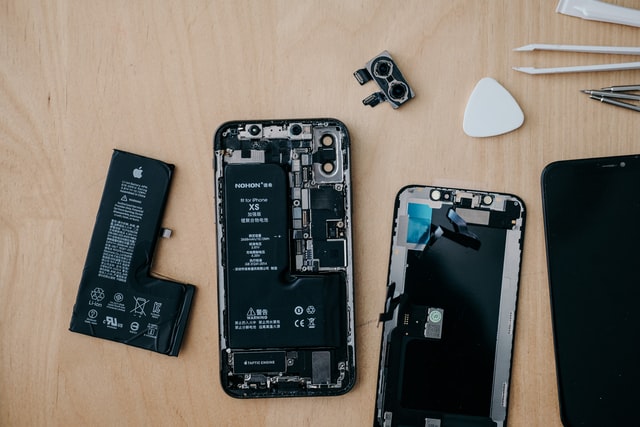The right to repair movement could have a significant impact on global emissions reduction
Many manufacturers use planned obsolescence so that products fail prematurely and are short-lived, thereby forcing consumers to purchase replacements at more frequent intervals. In the last year alone, a number of countries have filed lawsuits against and fined companies such as Apple and Samsung for deliberately slowing down older models of their phones as a strategy to push consumers toward upgrading. Companies often make it difficult for consumers to repair products either by limiting the availability of parts, using copyrighted software, or by laying down specifications on who can handle the products in the event of a problem. Additionally, components are glued together, screws that are incompatible with standard screwdrivers are used to hold devices together, or repair manuals are not made publicly available in order to complicate the process. Some companies also use their intellectual property rights to maintain control over the repair of their products. Customers are often prevented from getting their devices repaired by unauthorized persons as this would nullify the warranty. In the end, devices are replaced when batteries run out or individual components stop working.

Not only does this affect the interests of consumers, it also results in a growing mountain of e-waste. E-waste is the fastest growing waste stream globally. The Global E-waste Monitor 2020 estimates that in 2019, 53.6 million Metric Tonnes of e-waste was generated, and only 17.4% of this was collected and recycled. Half of this was TVs, computers, smartphones, etc. The other half was household appliances and heating and cooling equipment. With this backdrop, it is encouraging to see that a mature market and rising prices are encouraging users in many markets to keep their phones for longer durations. The average life cycle of a smartphone has gone up in the last few years.
Legislative Progress
The movement for the right to repair has made headway in pushing legislation that requires companies to be more transparent about the lifespan of their products and prohibits them from restricting consumers’ right to repair their own devices. A majority of the legislative action has been limited to the United States and the European Union, however.
A number of laws have been passed in US states to make it easier for individuals to repair things they own, such as automobiles, cell phones, farm equipment, etc. The first of its kind was in Massachusetts in 2012, giving motorists the right to repair services and access to spare parts. In 2020, electric vehicles were added to this initiative. During the pandemic, a Bill was introduced in Congress in the US, to tackle the limits set by manufacturers on medical devices crucial to fighting COVID-19.
As part of a wider effort to achieve its climate-neutrality goals by 2050, the European Union voted in favour of new right to repair rules that cover smartphones, tablets and laptops in 2021. The objective of these measures is to ensure that a range of products will be “recyclable, repairable and designed to last longer”. Such rules are also expected to extend to household objects such as fridges and washing machines. The EU EcoDesign Directive will require manufacturers to produce repairable products and provide spare parts for up to 10 years.
However, the movement continues to face challenges. In Norway, Apple sued Henrik Huseby, a small business owner who repaired iPhones. While the Oslo District Court held that Huseby had not violated Apple’s trademark, the Court of Appeal and the Supreme Court held that his refurbishing business amounted to a trademark infringement. Similarly, Ford sued an auto marketer and distributor of its Mustang and F-150 car replacement parts for design patent infringement in the US, and succeeded.
Many manufacturers continue to hold a tight grasp on repair markets and refuse to supply genuine spare parts to independent repairers.
The Way Forward
As a result of less stringent application of intellectual property laws in many parts of the world, especially in developing countries, manufacturers are unable to effectively prevent consumers from finding ways to repair or refurbish their devices and appliances outside the framework of authorized repair services set up by them.
However, in countries where intellectual property can be used as a weapon against the consumer, it is time that the right to fix one’s own devices became a standard. A Report by the European Environmental Bureau found that extending the life of European smartphones by a single year could save emissions equivalent to removing one million cars off the roads. The impact of repairing all electronic devices and appliances to extend their life cycle would be sizable and significant.
Right to repair legislations must include aspects of device upgradation, curbs on geographical limitations, compatibility of accessories across brands to reduce wasteful consumption, and guidelines for repairability and recyclability factors during the design and production process, among other things. Not only is this in the interest of consumers, it will also save resources and reduce the carbon emissions associated with manufacturing new products.
The European Union’s Climate Law could create necessary precedent in sustainability
Portugal’s environment minister announced in January this year that the country would utilize its
The effect of the COVID-19 pandemic on environmental migrants
As far back as 1990, the Intergovernmental Panel on Climate Change (IPCC) reported that migration wo
The right to repair movement could have a significant impact on global emissions reduction
Many manufacturers use planned obsolescence so that products fail prematurely and are short-lived, t




